#tanmono
Note
Hello! I keep reading fiction with kimono hemmed to fit, and I keep thinking that can't be right. I can see it if their genes mean widening shoulders, but aren't kimono folded and tucked under the obi? Thank you for looking over this detail. (I'll stay anonymous because it's an honest mistake, and I don't want specific writers to feel cornered about it)
Hi! Np for this anon ask, I'll just stress here I most often reply via Tumblr messenger so don't hesitate to ask for private answer if you need it :)
On to your question: you are right, hemming (in the Western sense of the word) a kimono is not usually done in traditional Japanese tailoring.
One of the main reasons is that fabric bolts (tanmono) are a somehow standard unit, with patterning done with kimono tailoring in mind (so motifs match between panels etc).

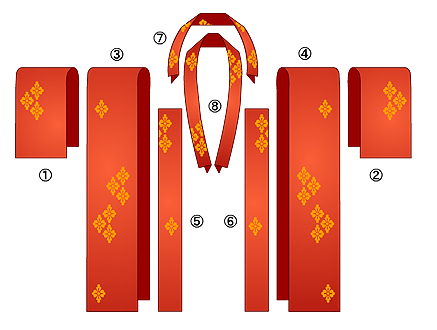
Hemming a kimono means important parts of your kimono design will disappear! It is especially true for woman's kimono who often often display patterns on their lower skirt + sleeves.
When you wear a kimono with woman styling, the kimono is supposed to be more or less your total height to fit you size. The extra material is then tucked at the waist to form what is called the ohashori fold hold up by ties (himo). That fold gives you leeway as to which kimono you can wear as it is much more forgiving than Western clothes sizing. Being tall simply mean your ohashori will be small or non existent.
Men styling is a bit different as men don't do ohashori, which mean the kimono is tailored to their exact size (= give or take your height minus 30cm).
Kimono were usually passed to new wearers as time went, which means they are supposed to be worn by several body types. So, what about when a kimono is truly too big/small for the wearer?
Fabric was once (and still is) an expensive material so cutting it was a big no! Cutting also meant loosing the original tanmono panneling which was a terrible thing to do for any future alterations.
We so have two scenarios:
1) the wearer is a child: tucks are made at the shoulders (kata age) to reduce width, waist (koshi age) to reduce lenght, and sleeves (sode age). You can see in this past note a great example showing how a kid grew into a kimono:
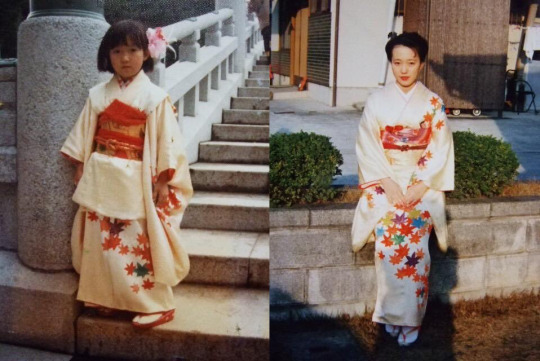
2) The wearer is an adult: the kimono would have been totally unsewn, and then sewn back together, hiding the extra material into seams/letting the fabric needed for bigger wearer.
Taking a kimono apart is not especially unheard of, and it is actually the traditional way to clean it (tokiarai = unstitching a kimono and washing / araihari = stretching pieces of a kimono on boards to dry after they have been washed and starched). You can see it done here:
youtube
Becky from Silk and bones has many kimono specimen photographed if you want to actually see how they are made - and just how much fabric can be hidden away into seams + how disastrous and infuriating it is to have a kimono with butchered cut fabric :(
TL:DR : People don't "hem" their kimono to wear them, women for ex. tuck the extra fabric away and go in their merry way. If sewing is needed, "hemming" is not exactly what would be done in kimono tailoring.
A better way to describe it would probably be "adjusted" or "altered" to size :)
#ask#japan#fashion#fashion history#kitsuke#kimono tailoring#hemming#kimono size#sewing#shoulder tucks#waist tuck#sleeve tuck#sode age#kata age#koshi age#tanmono#fabric roll#ohashori#men kimono#washing kimono#tokiarai#araihari#kimono alteration#着物#帯
460 notes
·
View notes
Text
As a person who has already read Gilbert's route from here:
Btw, @celiciaa thank you very much, it's so well written… I enjoy it a lot.
I must say that last event makes me so nostalgic for his route… I'm thinking of reading it again… after I finally get some normal clothes from Nokto's route…
!!!!!!!!BIG SPOILER ALERT!!!!!!!
First:

I am so looking forward to a similar scene…
"Oh, little rabbit is hitting on me..."
I still laugh thinking about it.
Second:

Gilbert! Seriously? I won't even comment on it
Third:

It's not even from his route. This is from the epilogue… Jeez…
And finally:

I just like the idea. Just do what you think is right, he will take care of all the consequences… I mean, he'll probably kill them, but… we don't talk about it)
PS: I'm so sad that I couldn't get the story from his point of view… I was in the lucky 100 until the end, but someone pushed me away at the last moment… Life is cruel… (sniffles)
#cybird ikemen#ikemen series#cybird#ikemen games#ikemen prince#ikepri#ikepri jp#gilbert von obsidian#ikemen gilbert#ikemen prince gilbert#ikepri gilbert
92 notes
·
View notes
Text

I made this yukata!
The fabric was a 14 yard long, 12" wide tanmono bolt that I bought from Japan and sewed using both western and Japanese methods of construction!
3 notes
·
View notes
Text
tanmono > royalbys
(:>
5 notes
·
View notes
Note
wait when did gilbert do math👀
I think it was in an event "let me examine all of you", if my memory serves me right, translation by Tanmono

Gilbert doing math...
How could this man be any more perfect (*˘︶˘*).。*♡
6 notes
·
View notes
Text
Outfits throughout the eras & countries
As far back as history goes, fashion has always existed there. Every age is shown through a unique painting method, and the same is true of fashion. Fashion varies not only between eras but also between regions. We will come across a wide range of cultural diversity, materials, and other things as we go from north to south and east to west. However, the thing about fashion is that it travels the entire world and is not limited to a certain place. In the beginning, clothes and fashion were restricted to a certain place or territory. However, the time has now changed. People are eager to acknowledge the diverse variety of cross-cultural relationships everywhere in the world and are ready with open hands to explore the world of fashion across the globe.
Let's dissect the fashion trends from different parts of the world and have a close look at how they change from place to place.
INDIA
The Indian subcontinent's women wear sarees, which are made of an unstitched length of cloth that has been woven over the body like a robe. One end of the fabric attaches to the waist, while the other end rests over one shoulder like a stole or shawl, occasionally exposing some of the tummy. Its length and width can vary from 4.1 to 8.2 meters (4.5 to 9 yards) and 60 to 120 centimetres (24 to 47 inches), respectively. The Nivi style is the most often used term and style for sari manufacturing and draping. The choli, or fitted bodice, and the ghagra, parkar, or ul-pavadai, or petticoat, are worn with the sari. In the Indian subcontinent, it is still in style today.
SOUTH KOREA
The hanbok is a traditional article of clothing worn by Koreans. South Koreans are the ones who call the clothing hanbok, but North Koreans call it chosn-ot (조선옷, lit. "Korean clothes"). The Korean diaspora, particularly Koreans living in China, also wears the clothing. The components of the traditional hanbok were the jeogori (top), chima (skirt), baji (pants), and po (coat). The basic form of the hanbok included numerous Mu-ism themes and was made to be easily movable. The majority of people's hanbok was entirely white and adorned with no design for thousands of years. Usually, extravagant hanbok was saved for important events like weddings. Commoners, or seomin, were for a while even prohibited from regularly wearing bright hanbok.
JAPAN
Japan's national attire is the kimono, a traditional piece of clothing. Unless the wearer is deceased, the kimono is a wrapped-front garment with square sleeves and a rectangle torso that is worn with the left side wrapped over the right. The kimono is typically accessorized with tabi stockings and zōri sandals. It is typically worn with a thick belt called an obi. Kimonos are made according to a predetermined technique and are usually created from a long, narrow bolt of cloth called a tanmono, however, fabric bolts in the Western style are also occasionally utilized. Men, women, and children can choose from a variety of kimonos depending on the event, the time of year, the wearer's age, and less frequently these days by their marital status.
SOUTH AFRICA
In South Africa, the traditional dress is called Dakshi, which is a colourful garment worn on the upper half of the body. A dakshi has both formal and informal versions and it varies from fully tailored suits to simple draped pieces. It is commonly seen as or tailored with an ornament v-shaped neck with the neck and sleeve line being embroidered and usually tailored as a loose-fit pullover garment. It is often worn with a brimless cap which is worn by the Muslim community from Africa and the African diaspora. The word "dashiki" comes from a Yoruba loanword ‘dàńṣíkí’ , which means 'shirt' or 'inner garment'.
INDONESIA
It is officially recognized that the kebaya is Indonesia's national garment. It is typically constructed of light materials like cotton, voile, gauze, lace, or brocade. Occasionally, it is adorned with embroidery and worn over the upper body. Pins, buttons, or brooches are used to keep it intact. Currently examining the lower garment, is referred to as a sarong, kemben, or kain. It is a lengthy piece of clothing that is worn and tucked either beneath the armpit or around the waist.Generally, ikat, tenun, songket, or batik are used to make sarongs. Many Southeast Asian airlines, such as Singapore Airlines, Malaysia Airlines, Royal Brunei Airlines, and Garuda Indonesia, have opted for Kebaya as the uniforms for their female flight attendants, making the traditional dress a fashion icon in the region.
As we've already discussed, just as fashion varies from place to place, it also does so across historical periods. Let us now explore the evolution of fashion across time.Even though fashion has been changing throughout the different eras, three eras have made a significantly noticeable evolution throughout the times. These are the Renaissance era, the Victorian era and the Art Deco era. Now let's dive into each era and get to know the clothing difference from each era.
THE RENAISSANCE ERA
The Renaissance era (14th-17th century) was a period of cultural rebirth in European history characterized by a resurgence of interest in classical art, literature, and learning. It saw a turn toward individuality, science, and humanism, which shaped artistic, social, and cultural advancements that still have an impact on contemporary society.
The development of the merchant class led to changes in fashion, while nobles displayed their wealth with elaborate decorations and luxurious materials. Men wore ornate hose, breeches, and doublets, often decorated with jewels and fur trimmings; ladies wore full dresses with structural corsets, rich draperies, and fitted bodices. Ethical principles were reflected in fashion, which emphasized natural shapes. Men's codpieces and women's farthingales, which stood for both social standing and creative expression, were iconic components. For both men and women, Renaissance dress left a long-lasting legacy of grace and creativity.
THE VICTORIAN ERA
Named for Queen Victoria, the Victorian era (1837–1901) was a time in British history marked by social reforms, industrialization, and rigid cultural standards. It was a time of great technological progress, a growing British Empire, and well-defined social divisions. Victorian literature, architecture, and fashion all reflected the ideas and values of the time, with a focus on gender roles, morality, and manners.
Women's clothing during the Victorian era was characterized by ornate gowns with voluminous skirts kept up by bustles or crinolines. These dresses were decorated with lace, ribbons, and elaborate needlework, and they frequently had tight waistlines and high necklines. Tailored suits consisting of fitted jackets, waistcoats, and pants usually came in subtle hues and patterns as men's fashion matured. Men are accessorized with cravats, pocket watches, and top hats, while women wear jewellery, parasols, and gloves. Accessorizing was important for both genders. Victorian fashion showcased the era's technological innovations and cultural inspirations while also reflecting the values of society, which included humility, respectability, and uniformity.
THE ART DECO ERA
The Art Deco period (the 1920s–1930s) was a time of creative art and design defined by geometric shapes, vivid colours, and rich materials. Art Deco embraced modernity and sophistication, incorporating elements from various cultural influences, such as ancient Egyptian and African patterns, and had an enormous effect on architecture, fashion, and the visual arts.
The Art Deco period saw a dramatic change in fashion that reflected the vibrant spirit of the day. The freeing "flapper" look, which was defined by knee-length skirts, dropping waistlines, and lavish embroidery or beading, was adopted by women's clothing. Because of their fluidity, materials like silk and chiffon were preferred, while long strands of pearls and cloche hats were popular accessories. Men's fashion, on the other hand, embraced a more streamlined form, with cut suits that had structured shoulders, straight-leg pants, and small lapels. Luxurious materials radiating elegance and class, such as wool and tweed, were widely used. Gentlemen's professional looks were finished with fedora hats, tie pins, and cufflinks.
In conclusion every era and culture adds a different thread to the thread of fashion history, from the ornate clothing of history to the modern fusion of global trends. Clothes have represented cultural values, social conventions, and personal identity for thousands of years, serving as more than just an article of clothing. Fashion captures the ideals, ideologies, and aesthetics of the era it is designed for, whether it is seen in the luxurious silks of imperial China, the elaborate draperies of Greco-Roman robes, or the cutting-edge designs of haute couture. Furthermore, fashion is a global phenomenon that mixes elements from other cultures and historical periods. Global fashion is enhanced by the variety of sartorial traditions, from the regal presence of the kaftan in the Middle East to the grace of the kimono in Japan. Despite these differences, innovation, self-expression, and the unwavering desire for beauty are the commonalities that connect fashion overtime periods and geographical areas. Humanity tells its stories, welcomes its diversity, and celebrates its creativity through fashion, making a lasting impression on history. We wholeheartedly welcome you to our fashion world VERVE to explore the new colours of fashion to find your own unique persona.
0 notes
Text

Finally bit the bullet and ordered a pattern so I can try sewing this wool/hemp blend up into trousers and a vest. Thanks to several iterations of Kuroshitsuji cosplay I Fukken' Hate!!!! sewing suits but not as much as I hate having a closet full of unused tanmono.
This is a kimono bolt but it's in the old-fashioned narrow width so it's not wide enough for my armspan--the standard bolt has been getting wider as the average person gets taller.
I'm basically always too hot no matter what time of year it is, so summerweight formalwear would be Great. Also it was ¥50 at the recycle shop so if I fuck up, no terrible loss.
1 note
·
View note
Link

Asian Clothing Figurines Review
Asian Clothing: Japanese Kimono
Kimono Type: Hanayomeishou Kimono: Shiromoku
Accuracy Rating: ???/5
Explanation: ???
#kimono#hanayomeishou#shiromoku#asianclothingfigurines#acfkimono#acfhanayomeishou#acfshiromoku#acfnovember
0 notes
Photo

These bears were made with the Tanmono (kimono fabric) from Taisho period (1920’s). DM if you are interested 🧸👘🇯🇵. . . . . #kumanokoido#teddybear#handmade#handcrafted#kimono#japan#tanmono#japanesefabric#着物#反物#大正#手作り#テディベア #和物 (at Brooklyn, New York) https://www.instagram.com/p/CCo83xjFO5J/?igshid=106jwwp7pl53
#kumanokoido#teddybear#handmade#handcrafted#kimono#japan#tanmono#japanesefabric#着物#反物#大正#手作り#テディベア#和物
0 notes
Link
There are people who make original kimono from tanmono.
Original kimono fits perfect and beautifully.
Tanmono is much cheaper than kimono. Why don’t you try to make special kimono.
0 notes
Photo
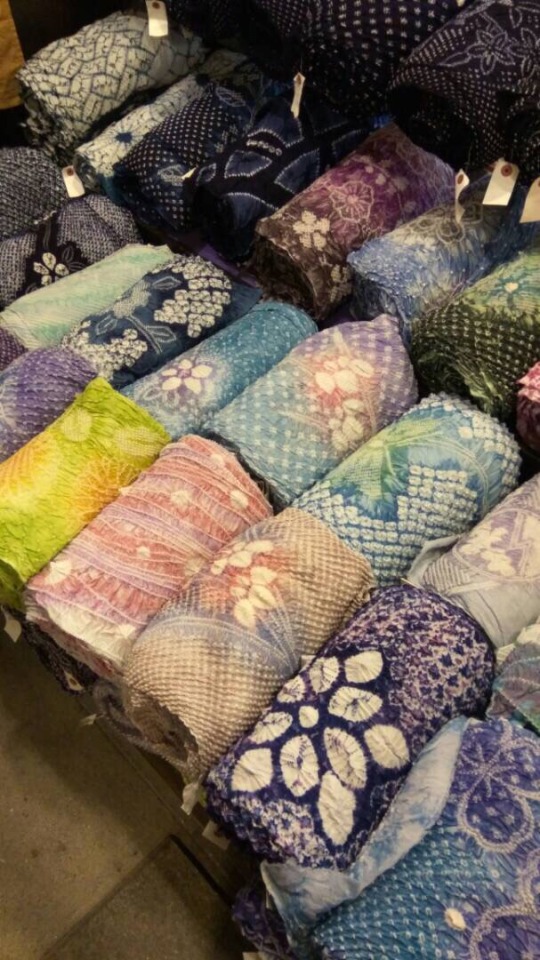
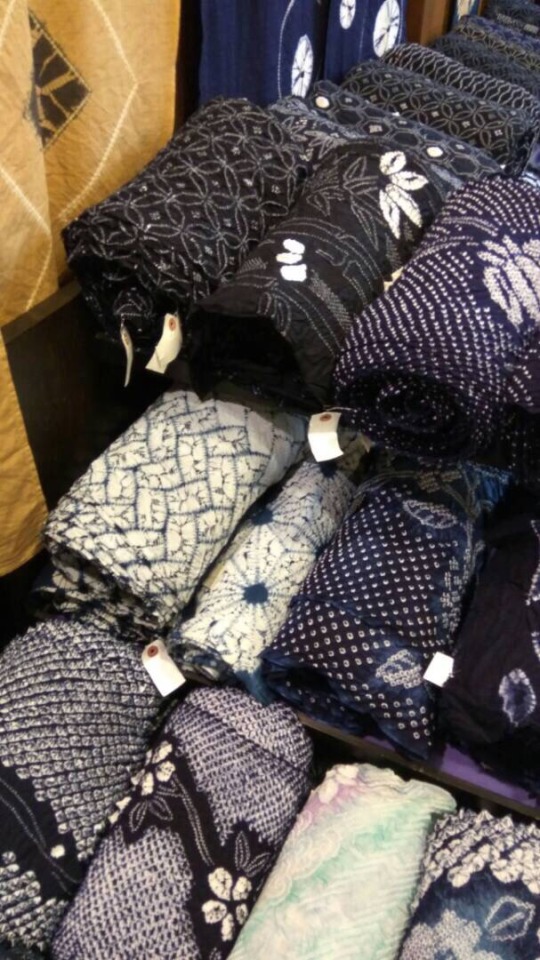
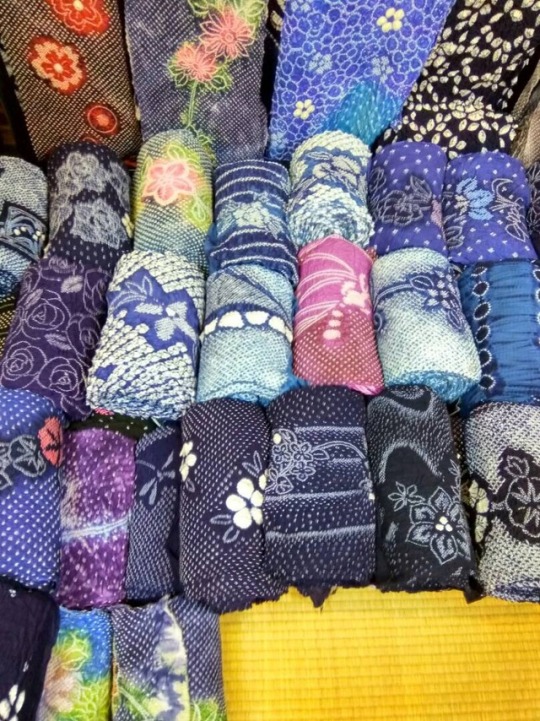

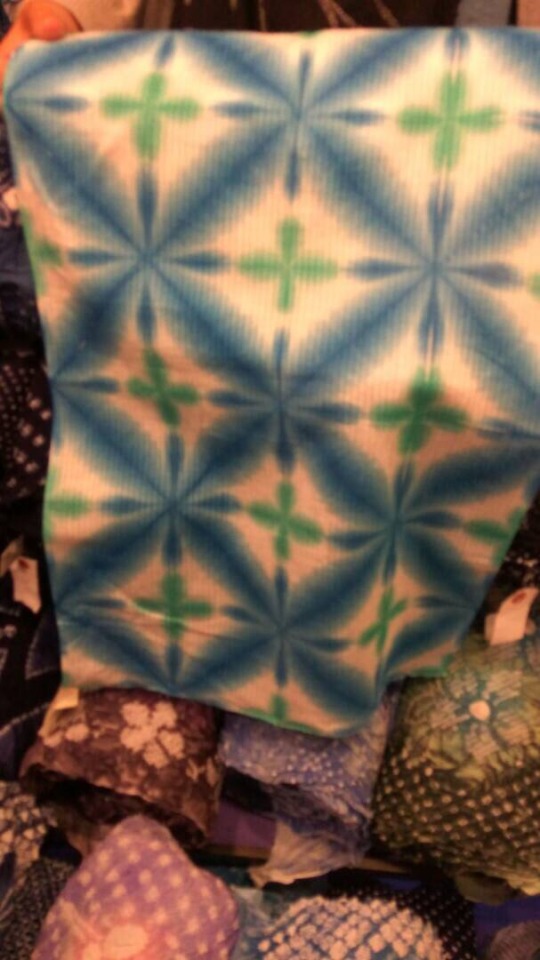
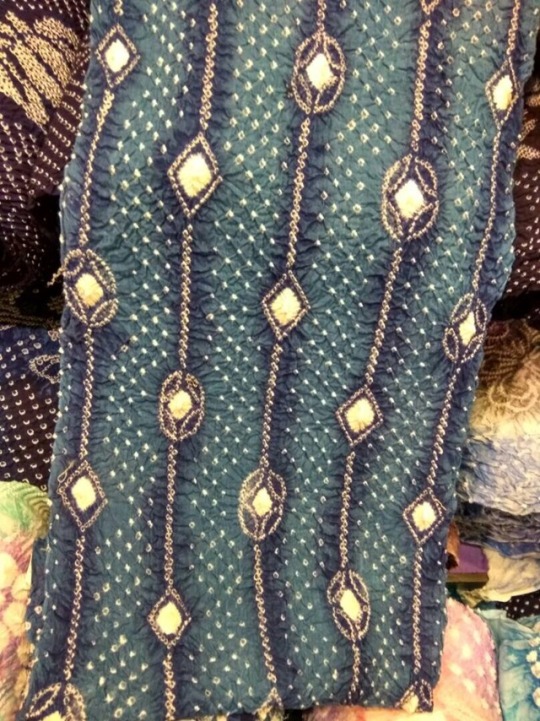

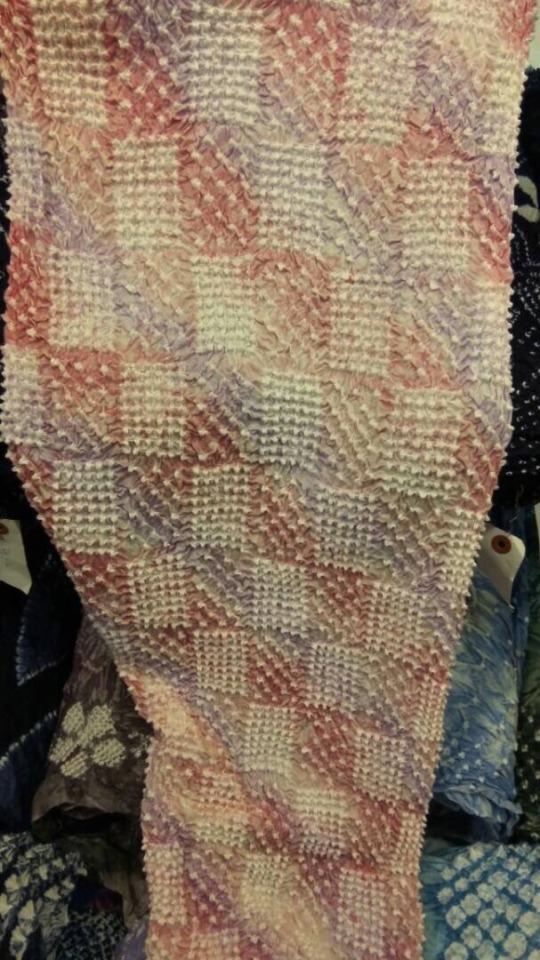
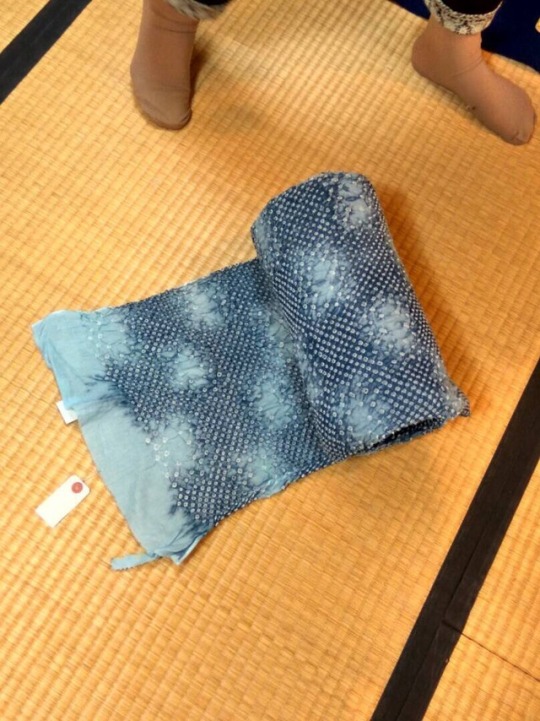
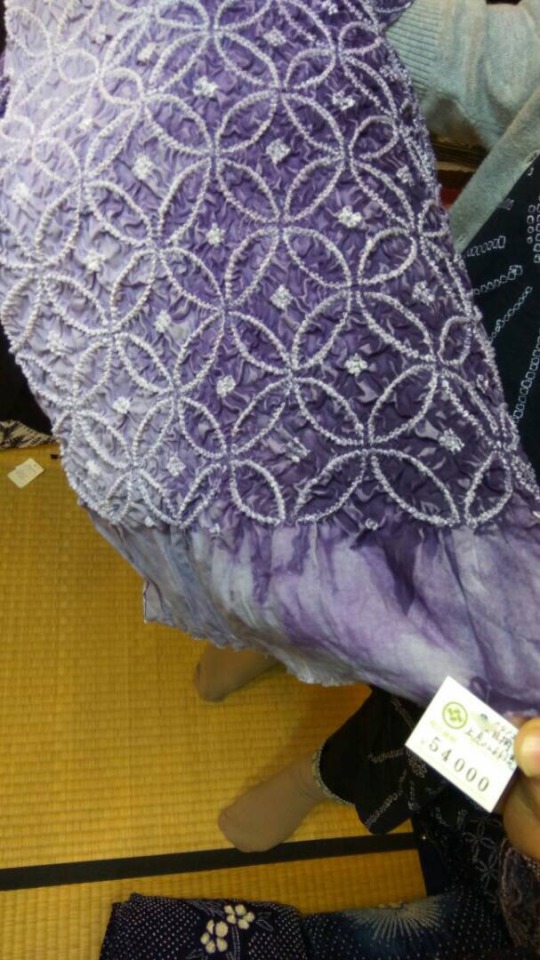
A friend of mine is in Nagoya and decided to go shibori shopping. Aren’t they gorgeous!
Igetaya
http://www.igetaya.nagoya/jiao-riyu-yi/
24 notes
·
View notes
Photo




That uzumaki tomoe (swirling magatama) hanhaba obi stopped me dead in my tracks! I mean just look at my beloved magatama obi I showcased a while ago:
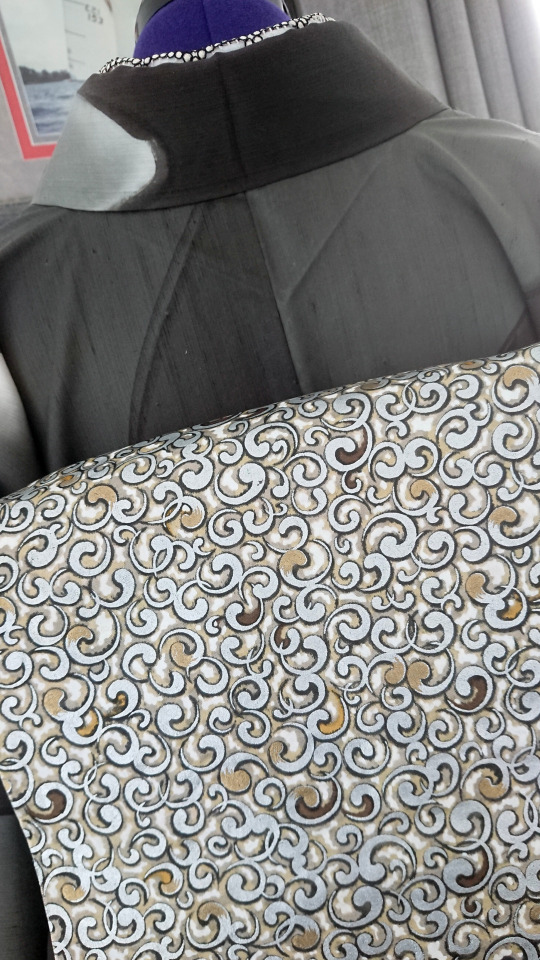
I first thought those two obi were perfect twins ^^ But at closer look, they are more close brothers than twins:
OP obi is ro (summer weave, those horizontal rows leaving discreet gaps in fabric) while mine is solid weave with genjikomon jimon/rinzu (raised pattern ground).
OP obi was probably resewn as an hanhaba obi at some point in its life, mine was resewn as nagoya obi from its maru obi original shape.
Pattern is nearly identitcal, the biggest difference being OP has bright orange streaks, something missing on my obi (but maybe the brown streaks where at one point brighter???).
But beside that, damned! Sister/brother items are always so moving when you find them in kimono fashion, especially when they concern rare pieces. I would love to be able to track the craftsmen who worked on those obi. But without maker’s mark (shoushi, stamped/woven at the edge of tanmono/fabric roll, nowadays often labels, see below), it’s a nearly impossible wish...


#japan#fashion#kimono#obi#craft#obi weaver#antique#magatama#tomoe#kimono twin#obi twin#tanmono#maker mark#着物#帯#weaver mark#dyer mark#shoushi#shôshi#証紙
124 notes
·
View notes
Text
ichiroya is shutting down in july.... i JUST found them....... 😣
1 note
·
View note
Note
I believe kosode fabric used to be wider than the modern tanmono, right? When did it get narrower or did it just happen gradually? When did kosode construction change to the modern kimono?
As far as I know the tanmono width has pretty much stayed the same over time. I have kimono that are 200 years old and their width is the same as their modern cousins (I had to go over and check just to make sure lol). The modern kosode that we know now has existed for almost 1,000 years, but truly came into form during the Momoyama Period/Edo Period (so, later 1500s-early 1600s). It's towards the Late Edo Period (1810s-1820s) that we start to see miyatsuguchi added to differentiate male and female kimono. By the time you reach the Meiji Period in 1868 you have the modern kimono that we know today ^^
8 notes
·
View notes
Photo

I made a blouse and skirt from old kinomo. Kimono is a Japanese traditional clothes made from a standard measured long cloth called "tanmono".When you unstitch a Kimono,it will go back to tanmono,and we can make Kimono again.It's a Japanese traditional idea to make good use of resources,which I think it's eco.In these days, I won't wear Kimono on a daily basis,so I altered it in to a blouse and skirt. I learned how to make it in this great book. → "型紙いらずの着物リメイク 1枚の着物でセットアップ" , written by Junko Matsusita. #environment #cloth #fashion #eco #reuse #recycle #earth https://www.instagram.com/p/CQiuqzPLCvh/?utm_medium=tumblr
1 note
·
View note
